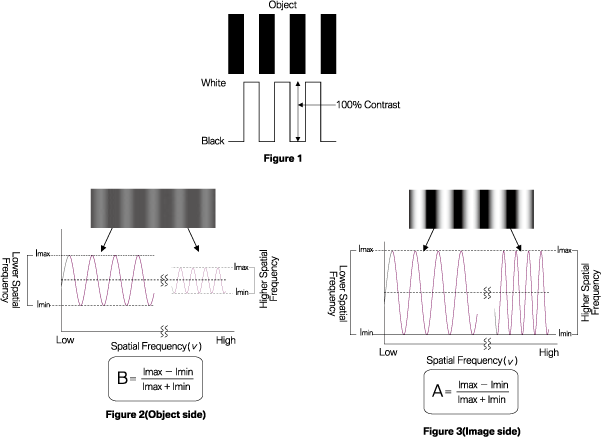Contrast
Contrast is the difference between light and dark at a given resolution (frequency) on an object.
In the case of the black and white square wave shown in Figure 1, the contrast ratio for black and white is 100%. This pattern is captured by the lens and the contrast ratio on the lens image plane is quantified.
Basically, the contrast ratio gradually decreases when a pattern with a fine frequency is imaged than when a pattern with a rough frequency is imaged with any lens, because the influence of optical aberration etc. is greater. When the contrast ratio is finally reduced to 0%, the white pattern and the black pattern are both gray and completely indistinguishable.
Figures 2 and 3 show the change in spatial frequency between the object and the image side. The horizontal axis of the graph is the spatial frequency and the vertical axis is the brightness.
The contrast between the object side and the image side at a certain frequency can be calculated by the formulas in Figures 2 and 3 as A and B.

